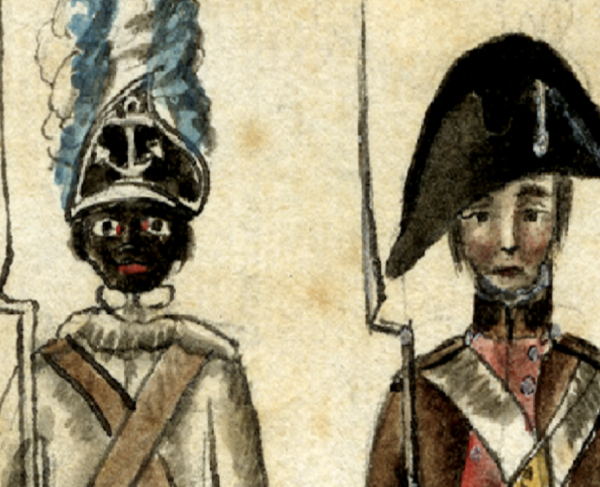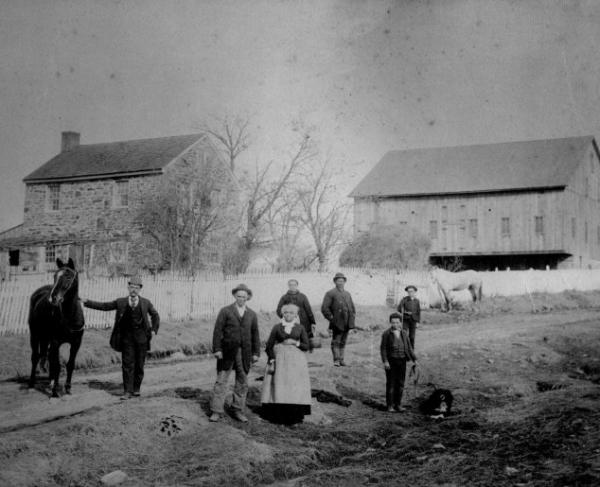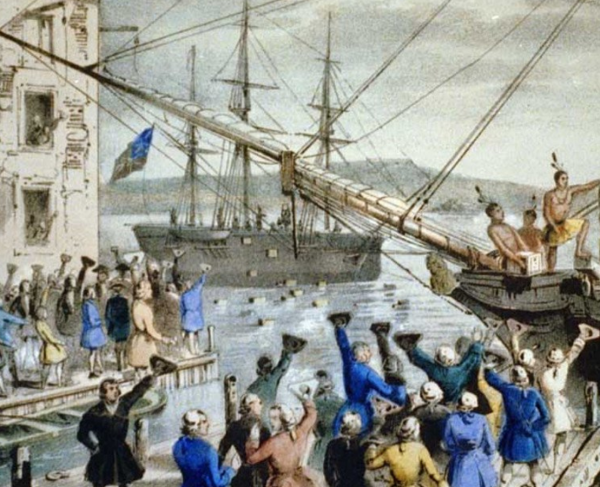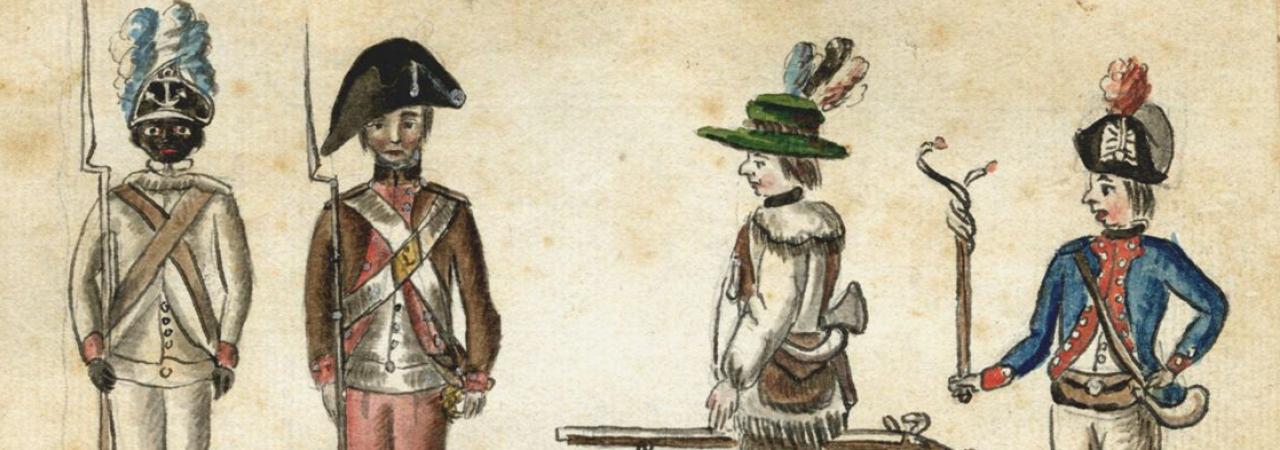
1781 watercolor illustrating Continental soldiers at the Siege of Yorktown which includes a member of the 1st Rhode Island Regiment.
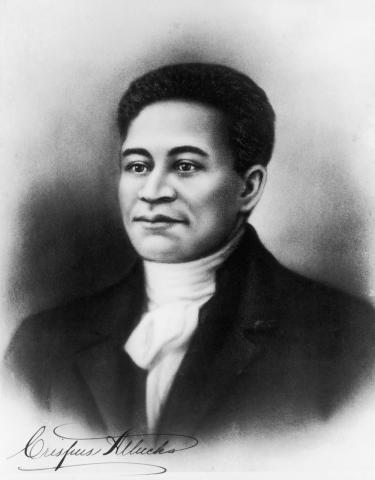
Both the Continental and British armies employed black people into their ranks to aid their existing armies in the field. Fighting for emancipation or for liberty, particularly in the case of the American Cause, was not often the driver for enlisting them into service. But many Continental officers did advocate for their freedoms in the name of liberty. We can look at the motives for both armies for enlisting black soldiers, which sometimes helped in the goal of achieving freedom for slaves, and sometimes did not.
Looking at the American side, black Americans were in the thick of the Revolution from its very first minutes. Whether we want to point to Crispus Attucks being the first man shot down at the Boston Massacre on March 5, 1770, or the actions of minutemen assembling from the hills around Lexington and Concord, the evidence is plain and clear that black citizens rallied to defend their mixed communities from the British army. Individuals like Peter Salem, Lemuel Hayes, Barzillai Lew, and Salem Poor, among other noted participants, were eyewitness to events because they were fighting in them. The Battle of Bunker Hill on June 17, 1775, is of specific importance because Salem Poor was officially recognized by his superiors for mortally wounding British Lieutenant-Colonel James Abercrombie, the highest-ranking officer to die in the battle.
The first calls for suppressing visible black enlistment came with the influx of officers and soldiers from colonies outside of New England. While many of the Massachusetts men were farmers, many more were sailors and port workers accustomed to interracial employment and cooperation. This was not the case with arriving soldiers from Virginia and elsewhere, as those black workers in the South were more likely to be enslaved than those in Boston. Gen. George Washington, himself a slave owner and understanding of these sentiments, also understood the need for a continental force that identified beyond regional differences. This is not to suggest he immediately welcomed black soldiers in the army, but for us to understand that even Washington, as wary as he was with the idea of armed black men, was desperate for capable armed men. African Americans who had been fighting in Massachusetts were grandfathered into the army after new rules went into effect on July 10, 1775, which barred both free and enslaved black Americans from enlistment.
This would not last long. As stated, Washington, along with the sentiments of fellow Southern officers and soldiers, was not induced to arm enslaved black Americans as it presented a clear conundrum for the institution of chattel slavery. But Washington was also desperate for men, and as the events of 1775-76 played out, he soon relented and gradually became supportive of arming free citizens, regardless of their skin color. Further prodding by a handful of animated junior officers pushed Washington in the last remaining years of the war. Chief among these officers was John Laurens, son of Continental Congress president Henry Laurens; Alexander Hamilton, a skillful aide-to-camp of Washington’s inner circle, and the Marques de Lafayette, the young Frenchman whose zeal for liberty and faith in the commander in chief brought him under the wing of Washington like no other. Along with a handful of others, these officers became vocally supportive of allowing black Americans to fight in the army. And when it came to arming slaves, John Laurens was unequaled in his quest to raise regiments within South Carolina and Georgia in 1780-81. These efforts proved futile against the ruling plantation gentry, but they clearly signaled a contradiction that the American Revolution presented: who was eligible for this liberty and freedom we speak to fight for? Their effect surely spread as even American General Nathanael Greene, himself a slave owner, was advocating the arming of slaves to battle proxy loyalist raiders in South Carolina.
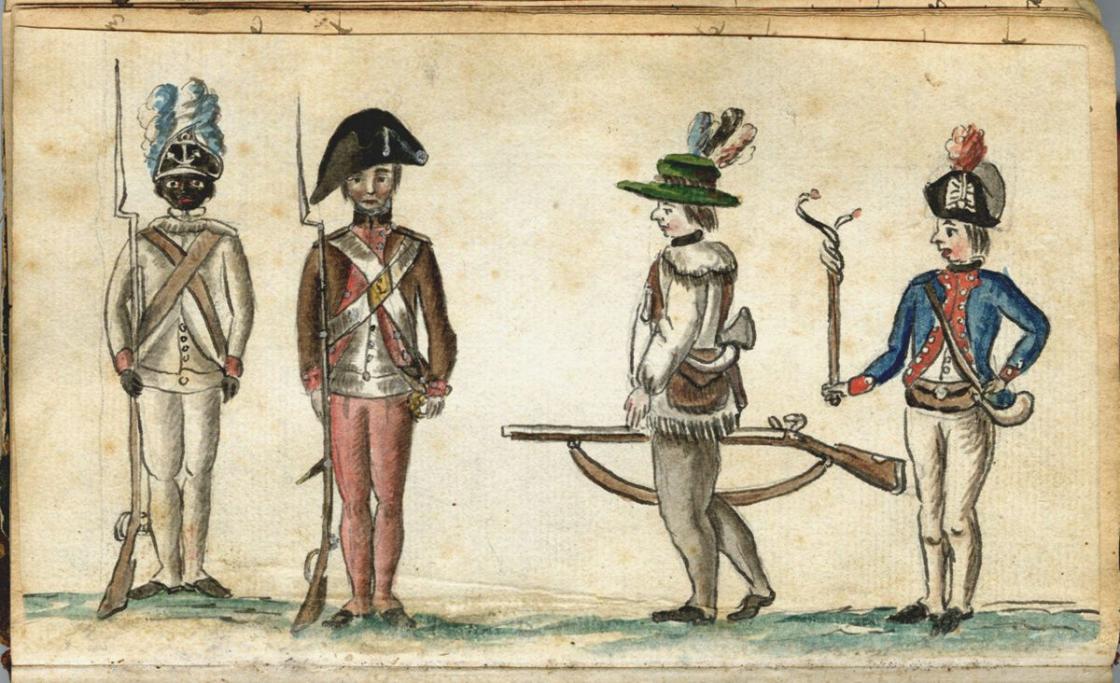
At the beginning of the war, free black citizens could and did join the ranks of the Continental army. This was when the existence of the army was still coming together; there was no official order and decorum established yet of who could join. We also must understand that black soldiers were not segregated from white soldiers. The only instance of segregation came with the raising of the First Rhode Island Regiment under Colonel Christopher Greene. Famed for their bright white dress, they were one of several regiments to participate in the defense of Rhode Island in August 1778. This segregation effort was not done to shun black participation, but rather to prove that blacks could fight as well as whites. Their regiment aside, the vast majority of the remaining black Americans who served in the Continental army did so fully integrated within other regiments and units. But most black soldiers were not armed recruits; they were cooks, laborers, craftsman, drummers, flag-bearers, couriers and medical assistants. We can document the instances where individual black soldiers fought in battle under arms, such as the storming of Redoubt 10 at Yorktown in October 1781, but it would not be accurate to claim that every regiment had black soldiers marching with muskets shoulder-to-shoulder with white soldiers. In some cases, regiments did have more black soldiers than others, making them a visible presence for eyewitnesses to account for. This is where we’ve gotten the assumption that one-fifth of the Continental army at Yorktown was black, the observation made by a visiting European officer. Records show that only about 5,000 black soldiers fought for American independence with the army over the eight years of war. But we also must remember that the Continental Army was never larger than 15,000 strong at any given time, and that the army became divided into four separate entities by 1780: northern, main, southern, and western. Having a detachment of three hundred men with less than fifty of whom were black is not insignificant, nor should we assume it was that way for purely racial reasons.
A large portion of black Americans enlisted in the army, but a sizable amount, particularly those who were enslaved, were signed up by their masters to serve in their place. It was not uncommon for wealthy people to pay an individual to be their substitute if drafted into service, as was the case later in the Civil War. Despite the ban of enlisting slaves into the army, those serving in place of their masters were taken. When policies loosened, and individual states began recruiting whoever they could get to satisfy muster rolls for the army, more enslaved people filled the ranks of the army. In some instances, it was difficult to find white Americans willing to enlist; it was also far more common that black Americans did not own property to tend to, making them more suited for the military. We also know that many who escaped their plantations also passed as free black Americans. There was some suspicion of this going on, and some states demanded that black enlistees showed proof of their legal status upon registering. But the Continental Congress, Washington, and others generally approved of the enlistments. The same approval can be said of those black Americans who joined the Continental Navy. Whereas the sight of armed black soldiers held a menacing position with many white Americans, no such thought was given to black sailors aboard merchant vessels. Between centuries of employment on the high seas, and the noted presence of black workers in shipyards throughout the continent, it was simply a far more accepted position for them to be in. And the navy, more desperate for men than even the Continental army, literally could not say no.
Turning our attention to how the British coerced black Americans into service, one must begin with Lord Dunmore’s proclamation in 1775 that stipulated all enslaved persons of rebel owners in Virginia who escaped and joined up with the British/Loyalist forces would thereby be legally freed. As much as some of us might want to presume this was done as a motion of pure abolitionism, it was, in fact, a way of creating chaos among the Virginian and southern plantation ecosystem. As Virginia’s royal governor, John Murray, Earl of Dunmore was deliberately trying to intimidate rebels from organizing; this would hopefully keep them busy. Perhaps nothing stirred fears more among ruling white perpetrators of slavery than the thought of their black slaves rising up and overthrowing their masters with lethal force. A handful of insurrections had already ingrained themselves into colonial memory, so these fears were not entirely unjustified. Nevertheless, Lord Dunmore’s proclamation stoked these embedded nightmares among the ruling elite, and within months of its public debut, hundreds of enslaved black men were joining the British side in support of fighting for their freedom. The immediate effects, though, were far more mixed than hoped. The first regiment of black troops fell victim to smallpox while others who expected to be armed were in fact given laborer positions aiding the British army. Dunmore’s proclamation would later inspire Sir Henry Clinton, the commanding general of British forces in America, to issue his own decree known as the Philipsburg Proclamation. Unlike the Virginian’s move, by 1779, the war was not going well for the British, and Clinton sought to reroute the campaign into the South. Knowing that the enslaved population far outnumbered the free population of white civilians, Clinton sought to destabilize the southern states by offering freedom to any enslaved person who escaped their rebel masters and came to the British side. Rather than being an abolitionist-at-heart, Clinton’s plan hoped to inspire the collapse of rebel support in the South. While this did not happen, it did create the atmosphere for fierce partisan warfare among neighbors and inspired upwards of 100,000 enslaved black Americans to flee their plantations. Throughout the revolution, most black Americans, free and enslaved, believed the British held a better argument for liberty than the Americans did, which explains why so many risked all to flee to them. In some cases, the British army seized slaves for themselves. By war’s end, the British had the logistical nightmare of trying to transport not just their defeated army, but also loyalist citizens who wished to leave the United States, and now freed slaves looking for a new life out of bondage in America.
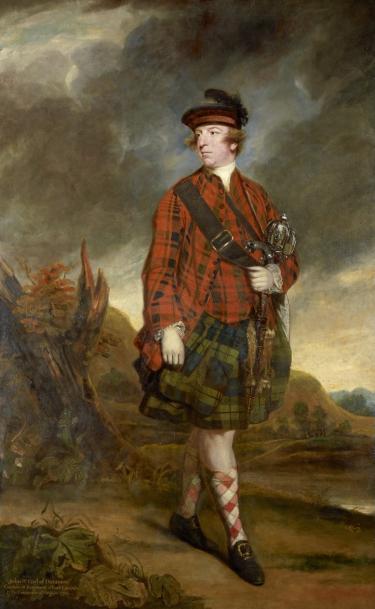
In many ways, the British army used eager black participants as secondary supporters to the main forces. This is not to suggest there weren’t armed black men fighting within the British ranks. It’s only to suggest that such examples were few and far between, mostly left to loyalist raiding parties that were informal and not part of the regular army. Examples of black regiments within the British army show up during the early years of the war in the northern states, and during the Southern Campaign in 1780-81. As stated, the primary task of military-age black men was not to fight in the army, but to serve as support staff for it. Laborers dug ditches and assembled redoubts for the army, most notably at Yorktown. Others were given a gruesome fate: dying of smallpox, many were intentionally left near rebel farms and routes of the American forces in Virginia. Others, like their counterparts on the American side, spied for the British where possible.
In this brief overview of African American participation during the Revolutionary War, we should be aware of a few things. There were black men who served in the armies as soldiers and black men who served for the armies as support. There were also countless black women and children who aided and supported both armies as well. The role of camp follower is for another discussion, however. Both free and enslaved men fought for American independence and for the British attempt to squash the rebellion. Most black Americans supported the British for reasons we know, but many served with the Continental Army because they believed in what the revolution presumably stood for. Some decided to serve for personal reasons, detached from skin color while others served precisely for the color of their skin. The complexities are part of the reason why these stories have remained on the margins of our general knowledge of the time period. The lack of simplicity leaves many to fumble the truth. To see contradiction befall many of these explanations is to first see with clarity how the principles that drove the American Revolution were what would undo slavery’s legitimacy within the United States. Among even those men fighting for liberty, it became difficult to explain how some people were destined for freedom and others were destined for bondage. For many African Americans, the choice has always been freedom, and the many who served during the American Revolution is further proof of how much they were willing to sacrifice to obtain it.
Further Reading
- From Slaves to Soldiers: The 1st Rhode Island Regiment in the American Revolution By: Robert Geake
- Black Patriots and Loyalists By: Alan Gilbert
- Black Presence in the Era of the American Revolution By: Sidney Kaplan and Emma Nogrady Kaplan
- Forgotten Fifth: African Americans in the Age of Revolution By: Gary B. Nash
- Race and Revolution By: Gary B. Nash
- The Negro in the American Revolution By: Benjamin Quarles
- Standing in Their Own Light: African American Patriots in the American Revolution By: Judith L. Van Buskirk
- African Americans in the Colonial Era By: Donald R. Wright

